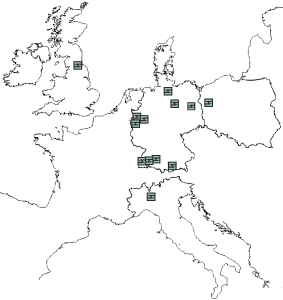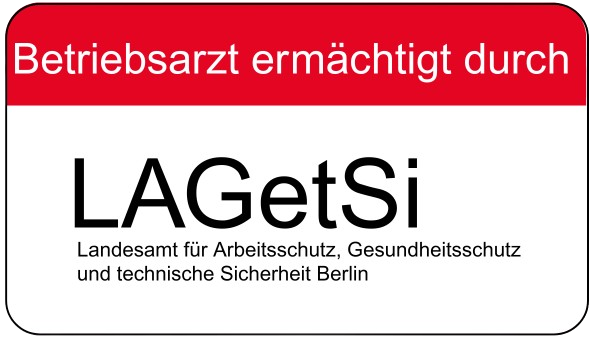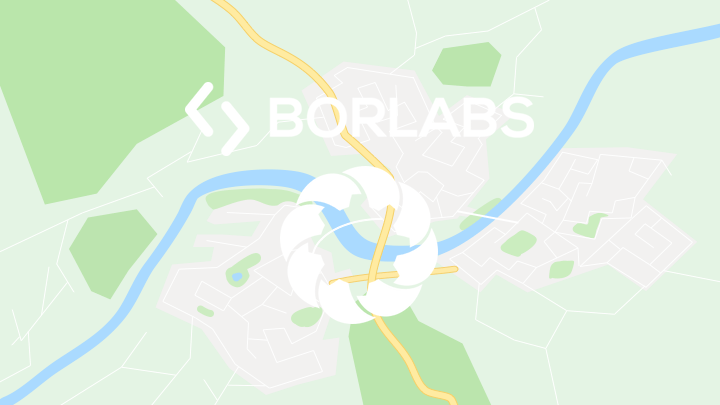Slipping into the office: Safety First: When the journey to work becomes a source of accidents
It happened again at the end of January. I had just got off the bus, dusk had already set in, and suddenly - poof - I was lying on the floor. The scenario? Classic black ice. One minute I was walking on two legs, the next I'm involuntarily landing on the seat of my trousers. Confusion spreads through me until I realise: snow + rain + sub-zero temperatures = danger of slipping * to the power of ten. I look around me and can't shake the feeling that someone has let loose a colony of penguins. A funny spectacle, you might think, if it hadn't been for the one or two who paid for their balancing act with pain.
But wait a minute - didn't I just come from work? Was that already a work or commuting accident? If so, what do I have to do now? We will answer these and other questions in the following guide and go into more detail about what lies behind the dry term "commuting accident" and talk about other things such as risks, protective measures and what the German Social Accident Insurance (DGUV) has to do with it. Because let's be honest: at the end of the day, we all just want to arrive safely - but if that's not the case, we want to be as prepared as possible, don't we?
What exactly are occupational and work-related accidents?
Now, before we delve deeper into the subject matter, let's first clarify what is meant by accidents at work and work-related accidents. These are accidents that occur at work or while travelling on business. An accident, as defined by the DGUV is a sudden, external event that causes physical damage. Sounds pretty straightforward, and it is. The interesting thing is that insured activities not only include the work itself, but also a lot of things that happen around it. Whether it's a business trip where you slip and fall in the hotel, a company sporting event that's not about winning a gold medal, or a Christmas party where everyone can really switch off. All these activities are covered by the insurance as long as they are within the scope of the insurance.n Connection with the work stand. But of course there are also limits. Not every incident is considered an accident at work. If you twist your back while secretly doing yoga in the office or stumble on the way to work while shopping privately, this is not covered. Accidents that you provoke yourself, whether through negligence or even intent - or because last night's party was too wild after all - are also not covered.Road accidents explained: What you need to know to navigate safely
Back to my fall story on the way home... Then it dawned on me: when employees have an accident on the way to or from work, it's called a commuting accident in legalese. But what exactly does that mean for me and everyone else who navigates to work more or less elegantly? DGUV formulates it like this:"Commuting accidents are accidents suffered by insured persons on the way to or from work or training centres. In principle, the direct route is insured." A commuting accident is therefore more or less a work accident gone wrong - it affects everyone who is on their way to work or back home. This includes a colourful group of people: Full-time employees, the hard-working students and pupils, the heroes of volunteering and those caring for relatives at home. As soon as you set foot out the door, the insurance clock starts ticking - at least until you return.The basics: When does it count as a commuting accident?
- From the front door to coming home: The protection of your professional journey begins when you leave your four walls and ends the moment you enter them again.
- Detours allowed: Life is not always a straight path. If you have to deviate from your usual route, your cover remains in place - provided the diversions is route- or work-related and does not serve a private purpose.
- Time for me = break in protection: A spontaneous shopping trip or a quick espresso with friends temporarily interrupts your insurance cover.
- The choice is yours: The way you get to work - whether by public transport, bike or even on inline skates - doesn't matter. What matters is that your protection begins and ends when you open and close your front door.
But what if I stray from the straight and narrow?
So, there I was, back on my two feet after fate had briefly sent me to Berlin's icy dance floor. Just when I thought I had figured out all the pitfalls of my daily commute, a new question fluttered into my head: what happens if I don't take the direct route to work? The DGUV has clear rules for this. Not every reason for a diversion is treated equally. A spontaneous trip to the lake just because the sun is beckoning will bring your insurance cover to a halt. But don't panic: As soon as you're back on your actual route to work or home, your cover will kick in again. The important thing here is: interruptions should not exceed two hours and a clear head is required during this time - alcohol and drugs are taboo. Regardless of whether your route is straight or full of bends, the rules are on your side, provided you stick to them. This knowledge of the details of your insurance cover enables you to concentrate fully on your safety and health.Insurance cover in the home office
An interesting detail that is becoming increasingly relevant in the current working world: Since the coronavirus pandemic, your insurance cover also extends to your home office. This means that even the journeys you make within your own four walls - be it to the printer or to the kitchen to get a cup of coffee - are covered by statutory accident insurance. This aspect is often underestimated or even overlooked, although it plays an important role for many of us. Especially in times when working from home has become the new normal for many, it is important to be aware of this extension of insurance cover. But beware: No protection without an agreement! For your accident insurance cover when working from home, a clear agreement between you and your employer is required, ideally in writing, e.g. as an addendum to your employment contract. This also applies to occasional working from home or while travelling. In short, clear agreements ensure insurance cover in the home office and when working remotely.Step-by-step: How do I report a work or commuting accident?
Reporting a work or commuting accident is crucial to secure your rights and claims. Here is a simple guide:- Immediate notification to the employer: Inform your employer about the accident as soon as possible. This is the first and most important step to ensure that the incident is officially recorded.
- Documentation of the course of the accident: Record what happened, including the time, place and possible witnesses. This information is important for the subsequent processing of your case.
- Medical treatment: See a doctor, especially if you have suffered injuries. The doctors should know that it is a work or commuting accident, as this is relevant for the settlement of treatment costs.
- Passing on the information to the employers' liability insurance association or accident insurance fund: Your employer is obliged to report the accident to the relevant employers' liability insurance association or accident insurance fund. Make sure that this report is made.
- Retention of all documents: Keep all documents relating to the accident and treatment in a safe place. This includes medical reports, confirmations from the employer and any correspondence with the employers' liability insurance association or accident insurance fund.
Take-Home-Message: Your safety compass
- Accidents at work and on the way to work: You are protected at work and on the direct route to work.
- Insurance cover: You are also covered when working from home and on detours.
- Prevention: Key role of the DGUV in reducing accidents in the workplace.
- Shared responsibility: Safety is a team effort - by employers, employees and insurers.
- Active participation: Your contribution counts! Adhere to safety standards and practise caring.











 Are you already a customer?
Are you already a customer? Pay by card
Pay by card Are you already a customer?
Are you already a customer?